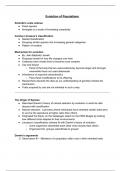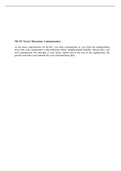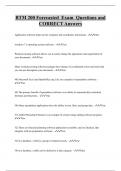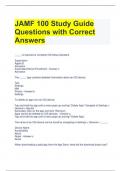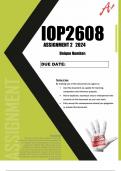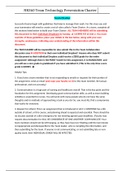Evolution of Populations
Aristotle's scala naturae
● Fixed species
● Arranged on a scale of increasing complexity
Carolus Linnaeus’s classification
● Nested classification
● Grouping similar species into increasing general categories
● Pattern of creation
Mechanism for evolution
● By: Jean Baptiste Lamark
● Proposed model for how life changes over time
● Creatures have innate drive to become more complex
● Use and disuse
○ Parts of the body that are used extensively become larger and stronger,
meanwhile those not used deteriorate
● Inheritance of acquired characteristics
○ Pass these modifications to its offspring
● Researchers discards the idea as our understanding of genetics refutes the
mechanism
● Traits acquired by use are not inherited in such a way
The Origin of Species
● Describes Darwin's theory of natural selection by evolution or what he calls
descent with modification
● Natural selection: a process where individuals have inherited certain traits tend
to survive the reproduce at higher rates than others.
● Originated his theory on the Galapagos island on the HMS Beagle by looking
how different birds adapted to their environments
● Linnaeus’s classification scheme fit with Darwin’s theory of evolution
○ some organisms resembled each other more closely than others
○ Organized into “groups subordinate to groups”
Darwin’s arguments
1) Observation #1 - Members of a population often vary in their inherited traits
, 2) Observation #2 - All species can produce more offspring than their environment
can support, and many of these offspring fail to survive and reproduce
3) Inference #1 - Individuals whose inherited traits give them a higher probability of
surviving and reproducing in a given environment tend to leave more offspring
than other individuals
4) Inference #2 - This unequal ability of individuals to survive and reproduce will
lead to the accumulation of favorable traits in the population over generations.
Thomas Malthus
● Wrote an essay leading to Darwin’s proposal
● Thomas wrote: that much of disease, famine, suffering was the consequence of
the human’s population potential to increase faster than food supplies and other
resources.
● Darwin realised the capacity to overproduce was a characteristic of all species
Individual organisms cannot evolve as it is the population that evolves over time.
Natural selection favors Drug-resistant pathogens
● NS is process of editing not creative mechanism
● NS favors those characteristics in a genetically variable population providing
benefits to current environments/events
Fossil-Record in Evolutionary Patterns
● Documents patterns of evolution
● Origins of new groups and organisms
● Formation of new species and origin of major new group of mammals, the
cetaceans
Biographical Supports os NS
● Take into account continental drift
● Determine origin of species
● With endemic (found no where else in the world) we can see how organisms are
closely related adapted to their environments. Giving rise to new species
Homologous and Vestigial Structures
Homologous structures
● Represent variations on a structural theme that was present in their common
ancestors
● Develop into structures with very different functions
Aristotle's scala naturae
● Fixed species
● Arranged on a scale of increasing complexity
Carolus Linnaeus’s classification
● Nested classification
● Grouping similar species into increasing general categories
● Pattern of creation
Mechanism for evolution
● By: Jean Baptiste Lamark
● Proposed model for how life changes over time
● Creatures have innate drive to become more complex
● Use and disuse
○ Parts of the body that are used extensively become larger and stronger,
meanwhile those not used deteriorate
● Inheritance of acquired characteristics
○ Pass these modifications to its offspring
● Researchers discards the idea as our understanding of genetics refutes the
mechanism
● Traits acquired by use are not inherited in such a way
The Origin of Species
● Describes Darwin's theory of natural selection by evolution or what he calls
descent with modification
● Natural selection: a process where individuals have inherited certain traits tend
to survive the reproduce at higher rates than others.
● Originated his theory on the Galapagos island on the HMS Beagle by looking
how different birds adapted to their environments
● Linnaeus’s classification scheme fit with Darwin’s theory of evolution
○ some organisms resembled each other more closely than others
○ Organized into “groups subordinate to groups”
Darwin’s arguments
1) Observation #1 - Members of a population often vary in their inherited traits
, 2) Observation #2 - All species can produce more offspring than their environment
can support, and many of these offspring fail to survive and reproduce
3) Inference #1 - Individuals whose inherited traits give them a higher probability of
surviving and reproducing in a given environment tend to leave more offspring
than other individuals
4) Inference #2 - This unequal ability of individuals to survive and reproduce will
lead to the accumulation of favorable traits in the population over generations.
Thomas Malthus
● Wrote an essay leading to Darwin’s proposal
● Thomas wrote: that much of disease, famine, suffering was the consequence of
the human’s population potential to increase faster than food supplies and other
resources.
● Darwin realised the capacity to overproduce was a characteristic of all species
Individual organisms cannot evolve as it is the population that evolves over time.
Natural selection favors Drug-resistant pathogens
● NS is process of editing not creative mechanism
● NS favors those characteristics in a genetically variable population providing
benefits to current environments/events
Fossil-Record in Evolutionary Patterns
● Documents patterns of evolution
● Origins of new groups and organisms
● Formation of new species and origin of major new group of mammals, the
cetaceans
Biographical Supports os NS
● Take into account continental drift
● Determine origin of species
● With endemic (found no where else in the world) we can see how organisms are
closely related adapted to their environments. Giving rise to new species
Homologous and Vestigial Structures
Homologous structures
● Represent variations on a structural theme that was present in their common
ancestors
● Develop into structures with very different functions

